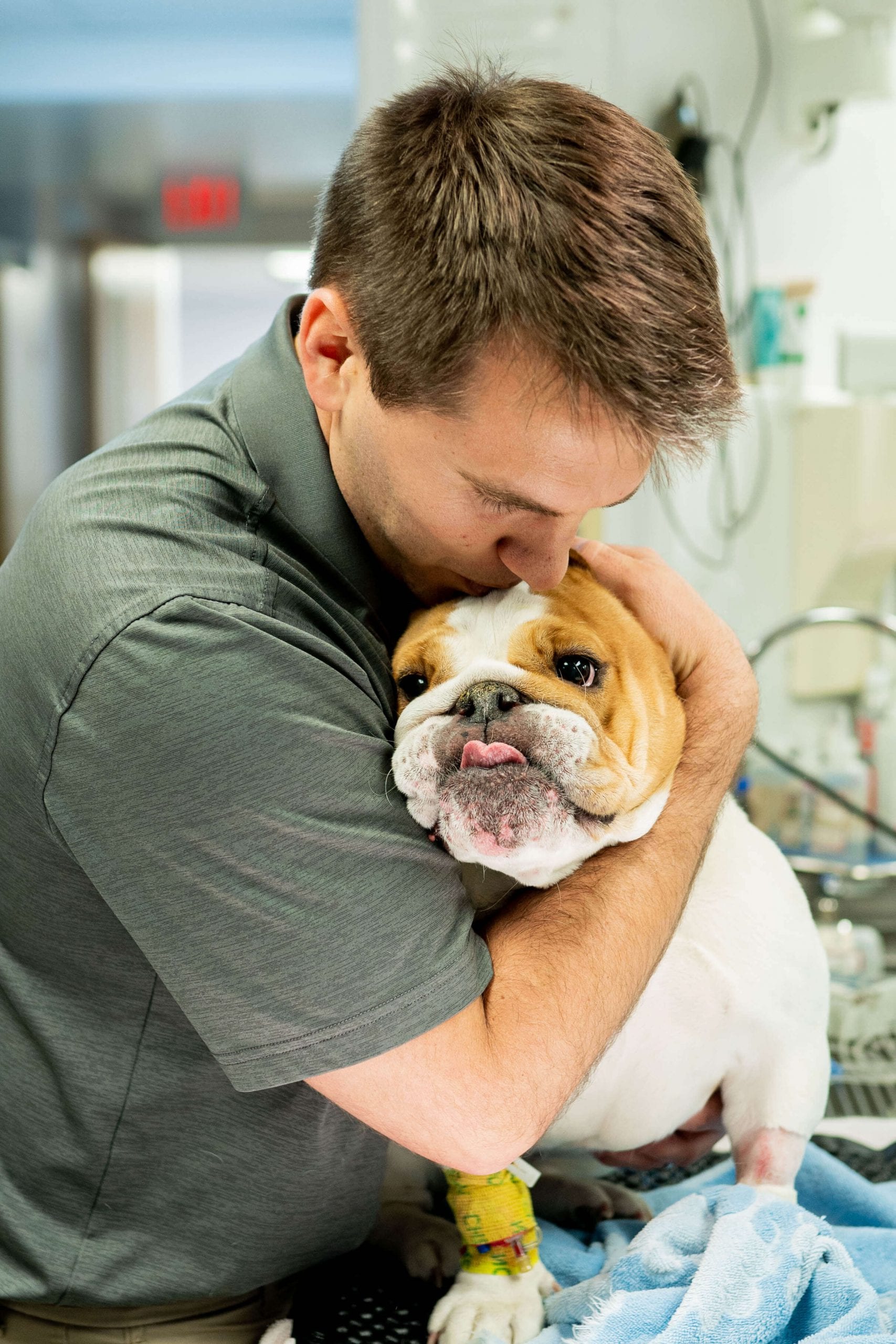As much as we would hope they wouldn’t, emergencies do happen. Do you know what to do for your pet when disaster strikes? Whether it’s a natural disaster, a lost pet, a family emergency, or a health emergency, it’s important to have a plan and be prepared.
Identification
It is always important for your pet to be identifiable. The most common form of identification is through tags on your pet’s collar. Make sure to include your contact information on your pet’s ID  tags including your name and phone number. That way, if they get lost, anyone who finds them will have a way to reach you to return your pet.
tags including your name and phone number. That way, if they get lost, anyone who finds them will have a way to reach you to return your pet.
The most foolproof method of identification is microchipping. When your pet is microchipped, a rice sized implant is injected under the skin in-between their shoulder blades. This implant has a unique number assigned to it that can be scanned. The number links to an account through the microchip manufacturer and includes your contact information. It is by far the most effective precaution you can take to ensure that your pet will be accurately identified if found. Central Veterinary Hospital can quickly and easily microchip your pet. If your pet is up to date on their vaccinations and wellness examination, bring them by at your convenience to be microchipped.
If you have an emergency, it is important that your pets are cared for. Keep a card on your person that lists your pets names and their locations as well as the contact information of trusted people who know how to care for your pet. If anything were to happen, those individuals could be contacted to care for your pet and ensure their safety and wellbeing.
First-Aid
In case of an injury or sudden illness, keep a pet-friendly first-aid kit is a necessity. This special kit should include regular medical items such as gauze, medical tape, scissors and tweezers, antibiotic ointment and alcohol wipes. It should also include a variety of other things that are more pet-oriented. Keep a small bottle of original Dawn dish soap in your kit for emergency cleaning. It can be used as a shampoo that will remove anything from oil to fleas. 3% Hydrogen peroxide can be used to induce vomiting. If your pet were to eat something that may make them ill, use an oral syringe and hydrogen peroxide to induce vomiting. Always be sure to alert your veterinarian before making your pet vomit, in case what they ate could react with the hydrogen peroxide or do more damage coming out. Keep a list of local veterinarians and emergency animal clinics easily available with contact information in case you ever have a pet health emergency.
Evacuation
If you need to evacuate your home in an emergency, make sure to alert first responders of your pet’s presence. A pet rescue decal in an easy to see window is an effective way to alert first  responders to be on the lookout for pets. Always ensure your own safety first, but evacuate your pets with you. Be aware of your pet’s favorite places to hide in case you cannot find them so that you can evacuate faster. Keep a crate or carrier readily available to make it easier to evacuate your pets, and have a pet-friendly place that you can take your pet in an emergency.
responders to be on the lookout for pets. Always ensure your own safety first, but evacuate your pets with you. Be aware of your pet’s favorite places to hide in case you cannot find them so that you can evacuate faster. Keep a crate or carrier readily available to make it easier to evacuate your pets, and have a pet-friendly place that you can take your pet in an emergency.
As well as a regular first-aid kit, you should have a travel kit in case of evacuation. It should include the supplies from the pet-friendly first-aid kit, as well as food and bottled water for your pet, extra poop bags, a copy of your pet’s medical records as well as your veterinarian’s contact information, and an additional leash. Toys and Benadryl should also be included to help calm your pet.

